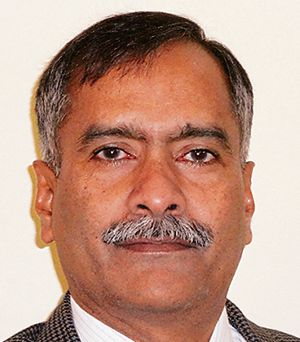Elections through the IAF prism
INDIAN Air Force (IAF) helicopters are ubiquitous in our elections. My first tryst with this exercise was in the Tripura Assembly polls in January 1983, when I was posted in Guwahati. We ferried an election party to a remote polling booth and brought it to Agartala, where counting was taking place. As luck would have it, our helicopter became unserviceable and we spent an extra day there.
We were staying in the Circuit House, where polling agents were also camping, including an ex-IAF officer who had joined a national party and was its election observer. His party was planning to unseat the communists, who were ruling Tripura. When the officer was asked to predict the poll outcome, he said: ‘I think we will form the government.’ When All India Radio started broadcasting the results, the first two seats were won by that officer’s party, leading to jubilation all round. We left the joyous group to check on our helicopter. On return, the officer was nowhere to be found! As it happened, those first two seats were the only ones that his party won — and with the communist cadre shouting victory slogans outside the Circuit House, the officer caught the next Indian Airlines flight to Calcutta!
February 1983 witnessed the Assembly polls in Assam. The agitation there was at its peak, and the February 18 Nellie massacre was emblematic of all the bloodletting. Local officials had refused to work, so the staff were flown in by IAF transport aircraft from outside the state for polling duty. I remember an arrival distinctly. As I received one aircraft, a clearly disoriented person disembarked and asked: ‘Sir, which place is this?’
The elections were pushed through, and on February 26, we got a tasking for three persons to be flown from Guwahati to Shillong and back. I recognised one as Hiteswar Saikia, the leader of the victorious Congress; the other two came from Delhi. The Chetak helicopter has one VIP seat in front and four flat decks at the back; one of the Delhiites went and sat on the VIP seat with authority. On landing at Shillong, a cavalcade of cars whisked the three away to meet the Governor at his residence, where Saikia presented his claim to form the government. On return to the helipad, a ‘kissa kursi ka’ routine played out over who would occupy the VIP seat. After much ‘you please,’ ‘nahin, aap bathiye,’ Saikia sat in front as he was now the CM-designate; the Delhiites’ role reversal from authoritativeness to subservience was astonishing.
After take-off, we encountered bad weather and returned to Shillong. It was pouring as it does only in the North-East. The Delhiites moved to the VIP hut, but Saikia stayed in the car. For the next 45 minutes, he sat alone, a forlorn figure — perhaps thinking of what the future would be since he had won with only 16 per cent of the voters backing him amid a major boycott. All credit to him, then, for putting Assam back on track.









